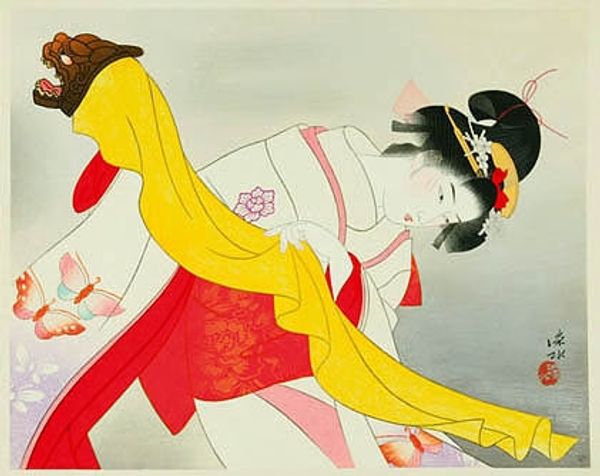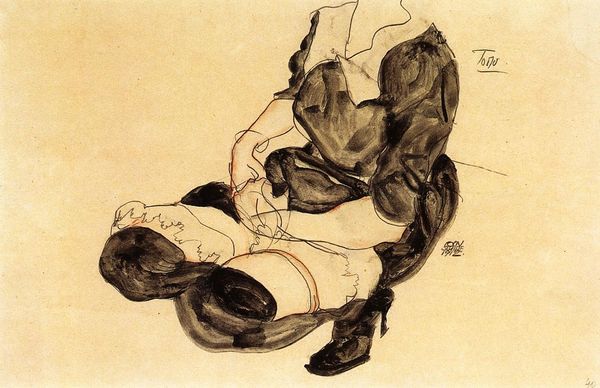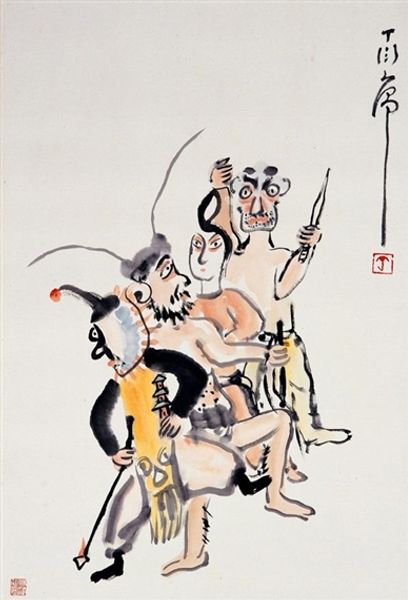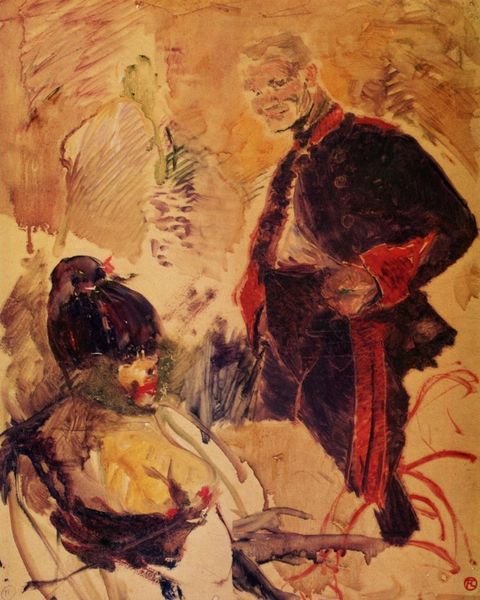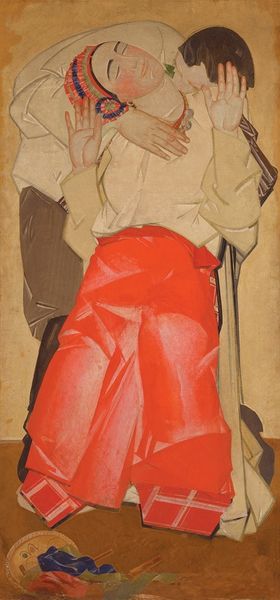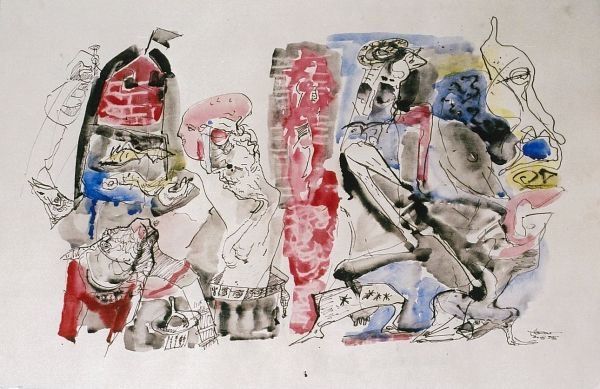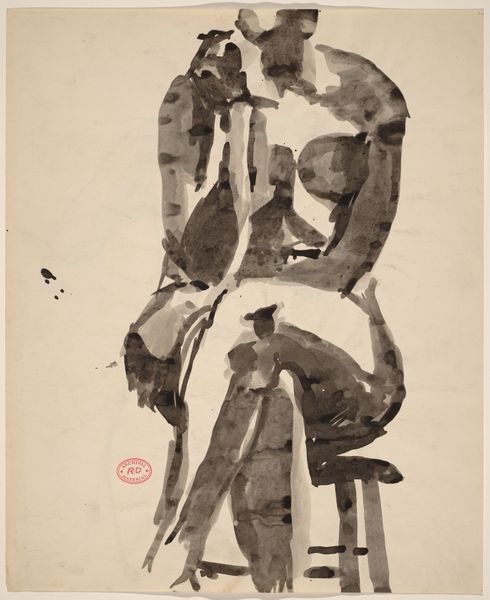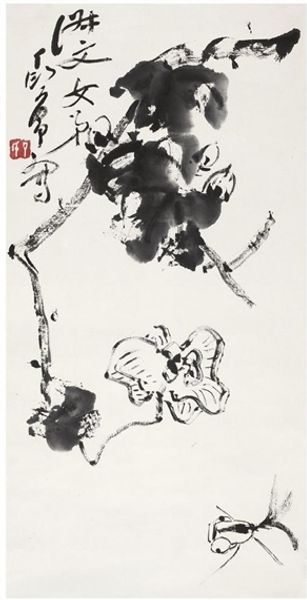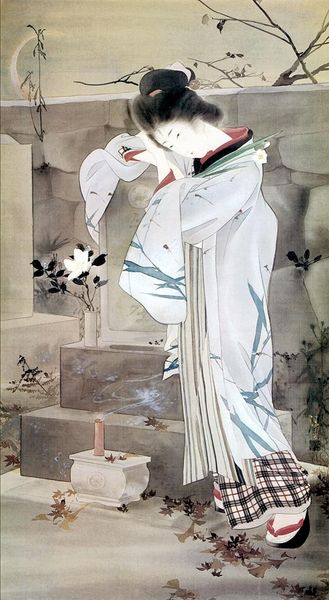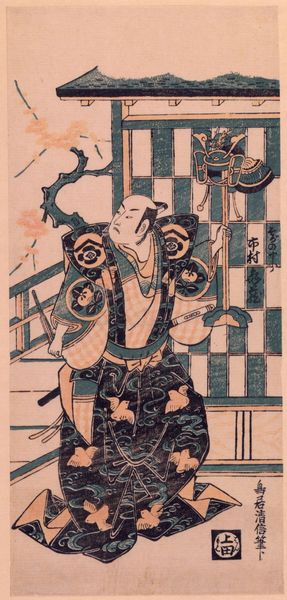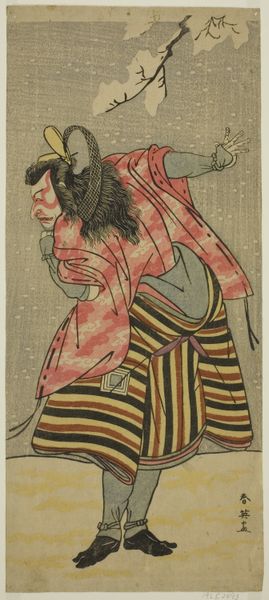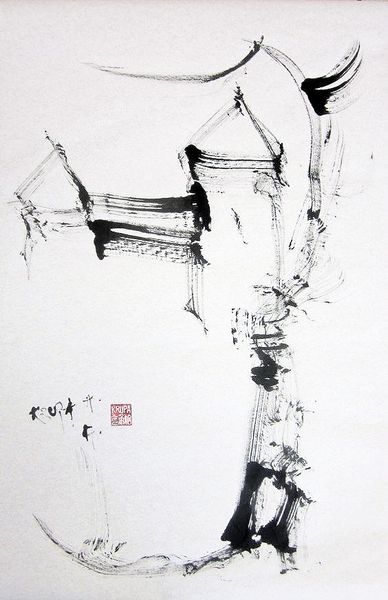
painting, oil-paint
#
portrait
#
narrative-art
#
painting
#
oil-paint
#
naive art
#
genre-painting
#
realism
Copyright: Norman Rockwell,Fair Use
Curator: Norman Rockwell’s 1944 painting, "The Tattooist," plunges us into a fascinating scene. What’s your initial read of it? Editor: Visually, it’s incredibly dense, almost claustrophobic. The patterned backdrop competes with the figures. And yet, the colors are muted, lending it a strange, almost nostalgic tenderness. Curator: That backdrop is key. Consider Rockwell's wider social commentary during World War II, the proliferation of tattoo parlors and their association with working-class identity. The client, receiving a tattoo memorializing sweethearts, can perhaps reveal underlying class anxieties in a quickly changing social landscape. Editor: You’re right. Those flash designs - anchors, hearts, banners with "Mother" and "Sweetheart" - they are such archetypal images. I read them as a vocabulary of working-class sentiment. They are visual anchors of loyalty and memory that resonated in a particular cultural moment, giving this individual tattoo deep symbolic meaning. The repetition emphasizes their cultural ubiquity. Curator: And the gaze? Both figures are looking away. Neither is looking directly at each other or the tattoo. How do we read the absence of intimacy? Editor: It points, perhaps, to the transactional nature of the interaction but the prevalence of memory being tattooed also tells of how deeply entrenched the need for sentiment and a remembrance of better times became as a sort of therapy for hardship. What I find fascinating is the interplay of traditional symbolism and the client's personal story inscribed on the skin. What do you make of it? Curator: Well, for me, it raises larger questions about identity, and performativity. How can these images—these symbolic emblems of affiliation and devotion—speak to broader issues like wartime nostalgia, loss and memory? What power dynamics are at play, considering the tattoo artist is the one controlling the narrative, permanently inking it onto skin? Editor: Indeed, it seems Rockwell gives us so much more than just an ordinary scene; a visual dialogue on what it means to commemorate experience. Curator: Agreed, an incredible confluence of the individual and cultural symbolism. Editor: A sentiment indeed etched on a body as collective memory, and memory becoming an expression of self.
Comments
No comments
Be the first to comment and join the conversation on the ultimate creative platform.
